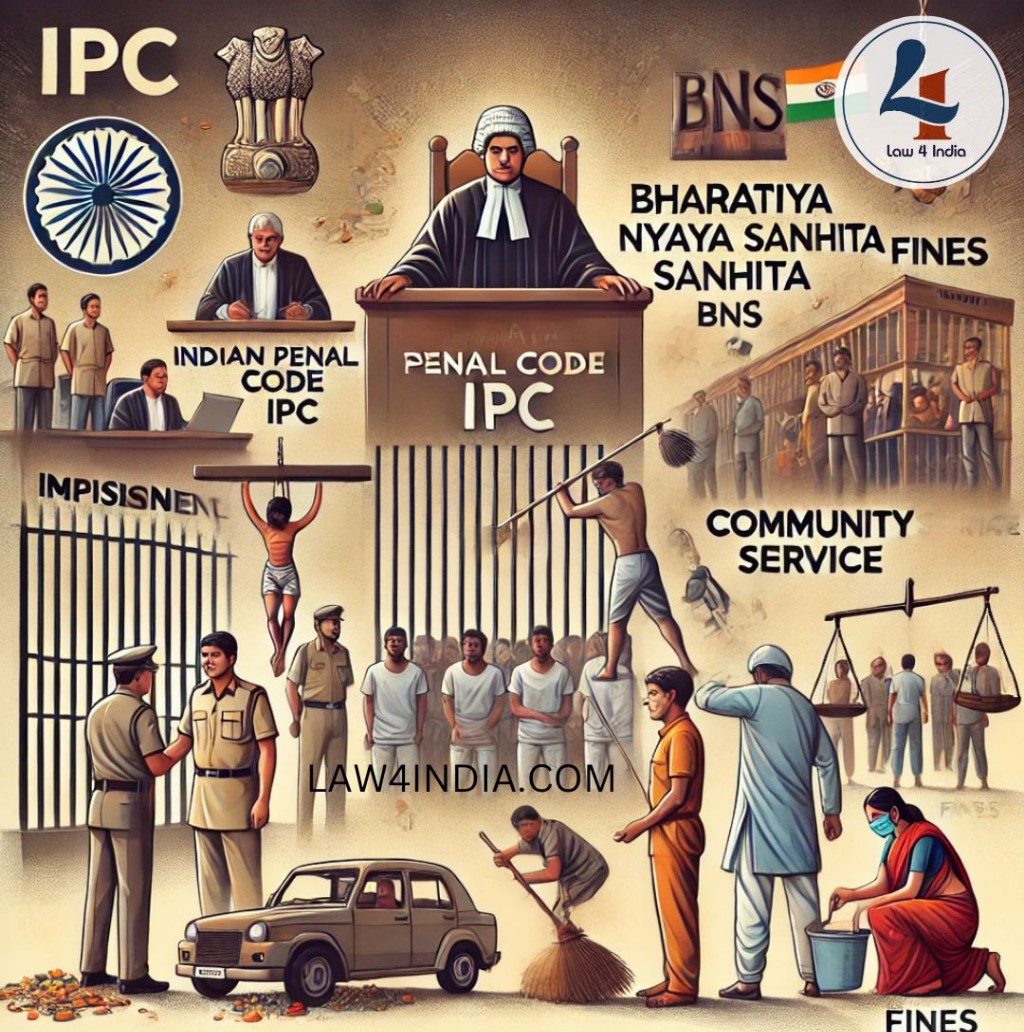-By VIKRANT KUMAR
Punishment : Theories and Types:
Punishment is a crucial element of any criminal machine, serving as a medium to preserve social order, discourage crime, and rehabilitate malefactors. In Indian law, the punishment has evolved over the yea rs, instructed by using literal, social, and prison tendencies. This composition explores the theoretical foundations of punishmnet, its types under the Indian Penal Code( IPC) of 1860, and the proposed adjustments below the Bharatiya Nyaya Sanhita( BNS), which seeks to replace the IPC.
HISTORICAL PERSPECTIVE OF PUNISHMENT IN INDIA
Punishment in ancient India was deeply embedded within the socio-religious material of the time. It became shaped by means of the standards of dharma( duty), justice, and retaining social order. The concept of subject turned into not truly retributive however also geared toward recuperation and deterrence. ancient Indian society changed into ruled with the aid of a complex system of legal guidelines and canons, broadly speaking deduced from non secular textbooks, customs, and royal rulings. these systems had been designed to insure concord and stability in the network.
Dharmashastras : Books like Manusmritiestablishes ethical and legal prinicples which govern societal geste.
Arthashastra : Attributed to Chanakya( Kautilya), as a way of maintaining dharma to ensure order.
Smritis : Collections of legal traditions which underlined the use of punishment as a tool to maintain dharma and order.
Theories of Punishment:
1. Retributive Theory:
This theory posits holds that punishment is a form of retaliation or ” simply comeuppance” for the misdeed.It’s bases on the principle that the lawbreaker deserves to suffer in proportion to the harm inflicted. Example ” eye for an eye” principle”.
2. Deterrence Theory :
Focuses to create fear in everyone’s mind by giving such a harsh punishment that it create fear in not only in offender’s mindset but whole society would think once before committing an offence.
*Functions on two levels:
- Individual Deterrence: Deterrence of the offender from further offending.
- General Deterrence: Prevention of others from committing the same offense.
Example: Severe punishment for offenses such as drug smuggling to deter illicit trade
3. Reformative Theory:
It aims to reform the offender and restore them to society as law-abiding citizens. Providing Education, consoling and vocational training are some key examples to meausre the root causes of criminal gesticulation which help the offender to reform as a better human being.
4. Preventive Theory:
It Aims to incapacitate the offender to restrain from future crimes. Life Imprisonment, forfeitures, or other limitations are key examples of this theory which limit the lawbreaker’s ability to harm society.
5. Compensatory Theory
It Focuses on compensating the victim for the harm suffered. It shifts the focal point from chastising the lawbreaker to restoring the sufferer’s loss, often via monetary repayment or reparation. Compensation to Acid Attack victims are some key example of this theory.
Types of Punishment In India Penal Code, 1860
Earlier total 7 punishment was introducted in IPC,1860. Later on 2 of the punishments were removed namely a) Whipping , b) Transportation of Life
Indian Penal Code, Chapter III, section 53-75 outlines various types of punishments that can be awarded by criminal courts.
1. Death Penalty( Capital subject)
Reserved for the” rarest of rare” instances, such as aggravated murder, terrorism, or acts endangering public safety. Example: Execution for heinous crimes like brutal rape-murders or acts of terrorism.
2. Life Imprisonment
Involves Imprisonment for the remainder of the offender natural life. Generally awarded to the offenders booked under serious crimes such as Murders, Rape
3. Imprisonment
Rigorous Imprisonment : Involves Hard Labor, such as grinding grain or digging.
Simple Imprisonment : Does not involve Labor, usually for minor crimes.
3. Forfeiture of belongings
The state seizes the offender’s property as punishment.Confiscation of assets in cases of corruption are some key example of this punishment
A recommendation was made to add five new forms of punishment, namely Compensation to victims, Disqualification from elections of convicted politicians, Community service, Externment , Public Censure.
PUNISHMENTS MENTIONED IN BHARATIYA NYAYA SANHITA,2023
Chapter II OF Bharatiya Nyaya Sanhita (BNS),2023 Outlines the various punishment which can be awarded by criminal courts.
All punishments remain the same as in the IPC, with the only addition being community service.
What exactly Community Service is?
Community Service:
Community service is awarded for minor offenses and First time offenders. Offenders are required to perform unpaid work for the benefit of society. The punishment promotes rehabilitation and reintegration into the community. Planting trees, helping old age people are some key example of Community Service.
Key Difference between IPC and BNS :
IPC and BNS highlight a shift from a retributive justice approach in the IPC to a corrective and restorative justice model in the BNS. The new legal framework introduces community service and restorative justice principles absent in the IPC while striving to modernize and simplify the legal system, making it more relevant to contemporary society.
Vikrant Kumar is a passionate 1st year law student at Faculty of Law.




